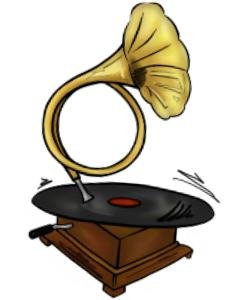Volume 17 - Wiener Waldhornverein
This installment will celebrate a recording made for the 100th year of the Wiener Waldhornverein! The “WWV” is the oldest continually operating horn club dedicated to preserving the sound and style of the Vienna Horn. The “Jahre 100” album was recorded in 1983 to commemorate their centenary anniversary, and includes twenty-seven players performing music spanning the history of their ensemble.
The history of the Wiener Waldhornverein begins in 1879 with Josef Schantl, solo horn of the Imperial and Royal Court Opera in Vienna, who organized a quartet of horns to perform for the parade commemorating the 25th wedding anniversary of Emperor Franz Joseph I and his wife Elisabeth. Schantl, inspired by the success of the quartets he had composed for the occasion, founded the “First Viennese Horn Club” in 1883. Very notably among the founding members was Johannes Brahms – a great advocate for the Austrian hunting music promoted by the ensemble! (Brahms is in the album cover photo, 2nd row, 4th in from the left sporting his distinctive hirsute beard.)
Across the history of the WWV, members of all the professional orchestras in Vienna and amateurs join together to preserve the sound and syle of the Vienna horn. They were featured at the 1st International Brass Congress, held in Montreux, Switzerland in 1976, and have also established a publishing company to promote their vast collection of horn ensemble music.
The Vienna horn, or Wiener Pumpenhorn, has been in consistent use by the Vienna Philharmonic Orchestra since 1870. These horns are three valve single-F horns that are designed essentially as a 19th Century Inventionshorns with double-piston valves, a design that uses a clock-spring casing that was patented by Leopold Uhlmann in 1830. The Vienna horn uses a terminal crook, and while mostly played in F, can also be crooked in E, Eb, G, A, and Bb alto. The distinct sound of these instruments is found in elegant legato and portamento, golden-hued tone, deeper resonance in articulation, and the captivating energy produced in the upper extremes of dymanic and range.
This Wiener Waldhornverein “Jahre 100” recording was produced in 1983 during a horn symposium in the Vienna Konzerthaus under the direction of Siegfried Schwarzl of the Vienna State Opera. The varied selections showcase many of the composers and iconic pieces that define and preserve the Vienna horn traditions.
The Hungarian Fanfare was among the pieces composed and performed by Josef Schantl for the 1883 parade. In this recording the WWV uses Eb parforce horns to reflect on the hunting associations of this music:
Karl Stiegler, solo horn of the Vienna Philharmonic from 1906-1932, contributed a large amount of horn ensemble music to the WWV. His piece, O Dirndl tief drunt im Tal, is a wonderfully expressive setting of this traditional Austrian folksong:
A brief Study in Jazz after Irving Berlin by Dieter Angerer features Margo Totzauer in a short solo as the WWV interprets this tune from the Great American Songbook:
Helmuth Foschauer’s Mauerbacher Festmusik was written for the 650th anniversary of the Maeurbach Charterhouse, a Baroque monastic complex 20km outside of Vienna. This grand fanfare resonates with the rich sound and searing high range of the Wiener Waldhornverein!
I hope you’ve enjoyed learning more about the unique and lasting tradition of the Wiener Waldhornverein. Thanks for reading Horn on Record!


